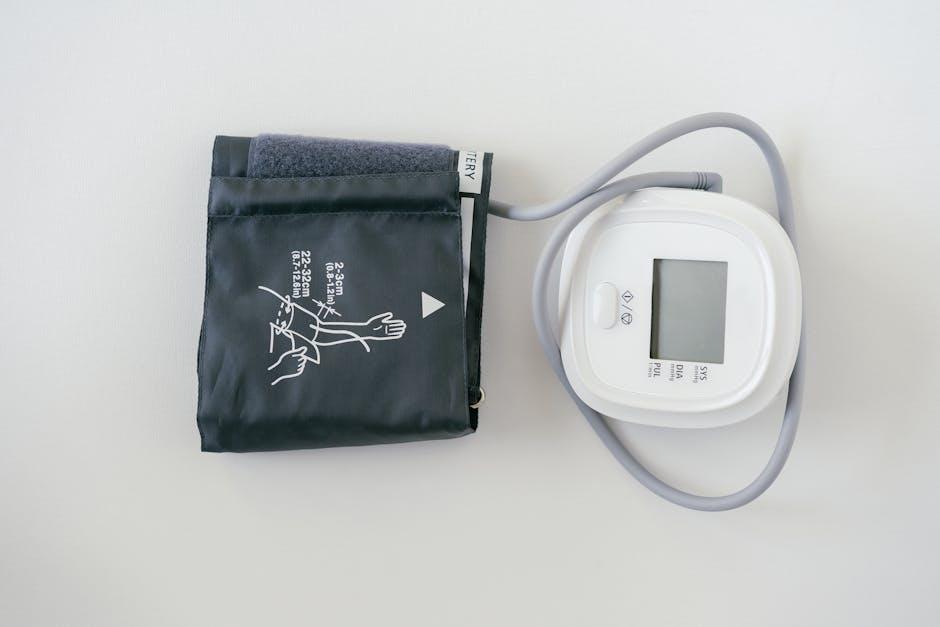Your car’s battery is much like the heart of your vehicle—quietly powering every start, every light, and every electronic convenience without fanfare. Yet, despite its vital role, it often goes unnoticed until it lets you down at the most inconvenient moment. Understanding how to test your car battery’s health isn’t just a matter of technical know-how; it’s a simple act of prevention that can save you time, money, and stress. In this article, we’ll explore practical, straightforward methods to check your battery’s condition, helping you keep your car ready for the road ahead.
Table of Contents
- Understanding the Importance of Regular Battery Health Checks
- Recognizing Early Signs of a Weak Car Battery
- Tools and Techniques for Accurate Battery Testing
- Step-by-Step Guide to Performing a Voltage Test
- Interpreting Test Results for Better Decision Making
- Best Practices for Maintaining and Prolonging Battery Life
- Q&A
- The Way Forward

Understanding the Importance of Regular Battery Health Checks
Keeping your car battery in optimal condition is essential not only for reliable starts but also for the overall health of your vehicle’s electrical system. Over time, batteries naturally degrade due to chemical reactions inside the cells and varying environmental conditions. Ignoring the state of your battery can lead to unexpected breakdowns, leaving you stranded at the most inconvenient moments. Regular health checks act as an early warning system, enabling you to catch potential issues like reduced charge capacity or corrosion before they escalate into costly repairs or replacements. This proactive approach ensures smoother rides and prolongs the lifespan of your battery, offering peace of mind every time you hit the ignition.
Incorporating routine battery assessments into your car maintenance schedule is simple and yields significant benefits. Apart from visual inspections—such as checking for swelling, cracks, or corrosion—using diagnostic tools can provide precise insights. These tools measure parameters like voltage, current, and cold cranking amps (CCA), which reflect the battery’s ability to perform under stress. Here’s why these health evaluations matter:
- Enhance safety: Prevent sudden battery failures that can compromise your vehicle’s electrical functions.
- Save money: Avoid emergency charges and premature battery replacements by detecting issues early.
- Optimize performance: Ensure your battery effectively supports all electronic components, from headlights to infotainment systems.
| Battery Parameter | Normal Range | Indicators of Trouble |
|---|---|---|
| Voltage (Engine Off) | 12.4 – 12.7 V | Below 12.4 V |
| Voltage (Engine On) | 13.7 – 14.7 V | Outside this range |
| Cold Cranking Amps (CCA) | Manufacturer specified | More than 20% drop |

Recognizing Early Signs of a Weak Car Battery
Spotting the subtle hints that your car battery is losing its edge can save you from unexpected breakdowns. Watch out for a slower engine crank when starting your car, as this often signals dwindling power reserves. Dimming headlights that brighten once the engine is running and a persistent check engine or battery warning light on your dashboard are also red flags. Additionally, if your vehicle struggles with electrical functions—like power windows or radio—this might mean the battery is struggling to supply consistent energy.
Keep an eye on these symptoms too:
- Swollen battery case—a sign of internal damage or overheating
- Corroded terminals—which can impede electrical flow
- Frequent jump starts—indicating weak charge retention
- Unusual odors—such as a rotten egg smell, hinting at leakage
| Symptom | What it Means |
|---|---|
| Slow Engine Crank | Battery struggling to supply power |
| Dim Headlights | Insufficient voltage |
| Corroded Terminals | Reduced electrical flow |
| Warning Lights | Battery or charging system issues |

Tools and Techniques for Accurate Battery Testing
To reliably assess your car battery’s condition, accuracy in testing is key. Start with a digital multimeter, a versatile tool that measures the voltage output. A healthy battery typically reads around 12.6 volts when the engine is off and 13.7 to 14.7 volts when running. For a quick snapshot of battery health, a battery hydrometer can determine the specific gravity of the electrolyte, showing the state of charge at a glance. Another essential tool is a battery load tester, which applies a heavy load to the battery to simulate starting conditions, revealing how well it can perform under stress.
While equipment is important, leveraging proper techniques ensures you get the full story from your battery. Always connect testing devices directly to the battery terminals, avoiding indirect or corroded contacts which can skew readings. Remember to perform tests in stable temperature conditions to avoid false results caused by extreme cold or heat. Here’s a handy comparison table summarizing key tools and their functions:
| Tool | Purpose | Key Benefit |
|---|---|---|
| Digital Multimeter | Measures voltage | Quick & accurate voltage check |
| Battery Hydrometer | Checks electrolyte specific gravity | Assesses state of charge |
| Battery Load Tester | Simulates engine start load | Tests performance under stress |

Step-by-Step Guide to Performing a Voltage Test
Begin by preparing your multimeter or voltmeter, ensuring it is set to measure DC voltage within the range of 0-20 volts. Before testing, turn off your car’s engine and all electrical accessories to get an accurate reading. Next, carefully expose your battery terminals, removing any dirt or corrosion that might block the connection. Attach the red (positive) probe to the battery’s positive terminal and the black (negative) probe to the negative terminal. Holding the probes steady, observe the reading on the device’s display.
Key steps to ensure an accurate voltage test:
- Keep probes firmly connected to the terminal posts without slipping
- A brake voltage reading around 12.6 volts or higher indicates a fully charged battery
- Readings between 12.4 and 12.6 volts suggest a partially charged battery
- Any voltage below 12.4 volts signals that the battery may need charging or replacement
| Voltage Range (Volts) | Battery Health Status | Recommended Action |
|---|---|---|
| 12.6+ | Fully Charged | Battery is in good condition |
| 12.4–12.6 | Partially Charged | Recharge or monitor regularly |
| < 12.4 | Low Charge | Charge immediately or replace battery |

Interpreting Test Results for Better Decision Making
Understanding the outcome of your battery test is crucial to making informed decisions that save time and money. When you check your car battery’s voltage or perform a load test, note that 12.6 volts or higher generally indicates a fully charged and healthy battery. Values dropping below 12.4 volts suggest a partial charge or potential issues. However, voltage alone doesn’t tell the whole story, which is why it’s important to consider the overall condition along with physical inspection for leaks, corrosion, or swelling.
- Healthy Battery: Voltage above 12.6 V during resting state
- Marginal Battery: Voltage between 12.4 V and 12.6 V, recommend monitoring
- Weak Battery: Voltage below 12.4 V, possible recharging or replacement needed
| Test Type | Normal Range | Action |
|---|---|---|
| Voltage Test | 12.6V – 12.8V | Battery is fully charged |
| Load Test | 75% or higher capacity | Battery passes under load |
| Cranking Test | Above 9.6V during start | Battery performs well when starting engine |
By interpreting your results through these benchmarks, you equip yourself with the knowledge to decide whether a simple recharge, maintenance like cleaning battery terminals, or a complete replacement is the best course. Remember, combining test readings with your vehicle’s performance symptoms ensures you avoid costly surprises and maintain reliable starts all year round.

Best Practices for Maintaining and Prolonging Battery Life
Proper care can significantly extend the lifespan of your car battery and ensure reliable performance. Start by keeping your battery terminals clean and free from corrosion using a mixture of baking soda and water. Regularly inspect the battery case for any cracks or bulges, which could indicate internal damage. Avoid leaving electrical components on when the engine is off, as this drains the battery unnecessarily. Also, try to minimize short trips — batteries recharge best during longer drives, so taking the car on extended journeys helps maintain optimal charge levels.
Temperature plays a critical role in battery health, so be mindful of where you park. Extreme cold can reduce battery capacity, while excessive heat accelerates internal fluid evaporation. Here’s a quick guide to ideal care habits:
- Park in shaded or garage areas during hot weather
- Use a battery maintainer if the vehicle is unused for extended periods
- Perform a voltage check monthly using a multimeter
- Secure the battery properly to avoid vibration damage
| Condition | Recommended Action |
|---|---|
| Corroded Terminals | Clean with baking soda solution |
| Low Voltage | Charge or replace battery |
| Physical Damage | Replace immediately |
| Frequent Discharge | Check alternator and electrical system |
Q&A
Q&A: How to Test Your Car Battery’s Health
Q1: Why is it important to test my car battery’s health regularly?
A1: Your car battery is the heart of your vehicle’s electrical system. Regular testing helps prevent unexpected breakdowns, ensures reliable starts, and can save you from costly repairs or being stranded.
Q2: What are the common signs that my car battery may be failing?
A2: Signs include slow engine crank, dim headlights, corrosion on battery terminals, a swollen battery case, or the check engine/battery warning light illuminating on your dashboard.
Q3: What tools do I need to test my car battery’s health at home?
A3: A basic multimeter to measure voltage and, if you want to get more detailed, a battery load tester can help assess the battery’s ability to hold charge under stress.
Q4: How do I measure my battery’s voltage with a multimeter?
A4: Set your multimeter to DC voltage (20V range is ideal). Connect the positive (red) probe to the battery’s positive terminal and the negative (black) probe to the negative terminal. A healthy, fully charged battery should read around 12.6 volts or more when the engine is off.
Q5: What voltage readings indicate a weak or dead battery?
A5: If your battery reads below 12.4 volts, it’s partially discharged; 12.0 volts or less usually means it’s significantly weakened or dead and may need replacement.
Q6: Can I test the battery while the car engine is running?
A6: Yes. A running engine typically shows 13.7 to 14.7 volts due to the alternator charging the battery. If voltage remains below 13 volts, it may indicate a charging system problem.
Q7: How does a load test differ from a voltage test?
A7: While voltage tests tell you the current charge level, a load test evaluates how well your battery performs under real-world conditions by applying an electrical load. This reveals if the battery can maintain voltage under stress.
Q8: Is it safe to test the battery myself?
A8: Yes, if you follow safety precautions: wear gloves and eye protection, avoid sparks near the battery, work in a well-ventilated area, and never touch both terminals at once with a metal tool.
Q9: What should I do if my battery fails these tests?
A9: Try recharging it fully first. If it still fails to hold charge or starts your car sluggishly, it’s time to replace the battery. Don’t wait too long to avoid getting stranded.
Q10: Can extreme weather affect my battery’s health?
A10: Absolutely. Cold weather can reduce battery capacity and slow chemical reactions inside, while extreme heat can increase corrosion and shorten battery life. Testing regularly during seasonal changes is wise.
Q11: How often should I test my car battery?
A11: For most vehicles, testing the battery twice a year—especially before winter and summer—is sufficient. Older batteries (3+ years) deserve more frequent checks.
Q12: What role does battery maintenance play in longevity?
A12: Keeping terminals clean and tight, ensuring the battery is securely mounted, and avoiding deep discharges all help prolong battery life and maintain its health.
Testing your car battery is like a health check-up for your vehicle’s electrical engine — a little effort can go a long way in keeping your journeys smooth and stress-free.
The Way Forward
In the end, knowing how to test your car battery’s health is like giving your vehicle a little check-up without the mechanic’s bill. With just a few simple steps and some basic tools, you can keep the spark alive and avoid unexpected stalls on the road. Remember, a well-tested battery doesn’t just power your car—it powers your peace of mind. So take charge, stay prepared, and let your engine roar with confidence every time you turn the key.

